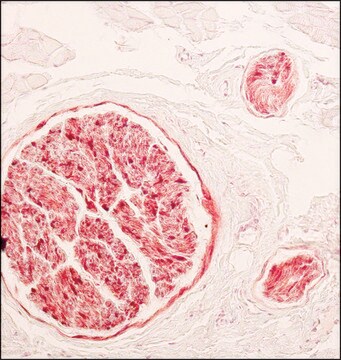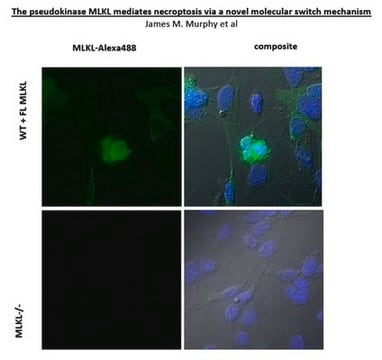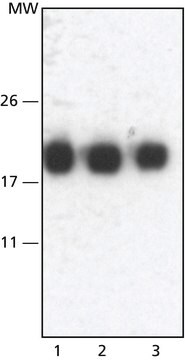SAB4200671
Anti-S-100 (β-Subunit) antibody, Mouse monoclonal
clone SH-B1, purified from hybridoma cell culture
Synonyme(s) :
Monoclonal Anti-S-100 (β-Subunit) antibody produced in mouse, NEF, S100, S100-B, S100beta
About This Item
Produits recommandés
Source biologique
mouse
Niveau de qualité
Forme d'anticorps
purified from hybridoma cell culture
Type de produit anticorps
primary antibodies
Clone
SH-B1, monoclonal
Espèces réactives
cat, rabbit, porcine, bovine, rat, human
Concentration
~1 mg/mL
Technique(s)
immunohistochemistry: 1.5-3 μg/mL using immunoperoxidase labeling of pronase digested, formalin-fixed, paraffin-embedded sections of rabbit tongue.
Isotype
IgG1
Conditions d'expédition
dry ice
Température de stockage
−20°C
Modification post-traductionnelle de la cible
unmodified
Informations sur le gène
human ... S100B(6285)
Description générale
Immunogène
Application
- immunohistochemistry
- enzyme linked immunosorbent assay (ELISA) (Ca2+ ion independent)
- immunocytochemistry
- immunoblotting
- dot blot
- immunohistochemistry.
Actions biochimiques/physiologiques
Clause de non-responsabilité
Not finding the right product?
Try our Outil de sélection de produits.
Code de la classe de stockage
10 - Combustible liquids
Point d'éclair (°F)
Not applicable
Point d'éclair (°C)
Not applicable
Certificats d'analyse (COA)
Recherchez un Certificats d'analyse (COA) en saisissant le numéro de lot du produit. Les numéros de lot figurent sur l'étiquette du produit après les mots "Lot" ou "Batch".
Déjà en possession de ce produit ?
Retrouvez la documentation relative aux produits que vous avez récemment achetés dans la Bibliothèque de documents.
Notre équipe de scientifiques dispose d'une expérience dans tous les secteurs de la recherche, notamment en sciences de la vie, science des matériaux, synthèse chimique, chromatographie, analyse et dans de nombreux autres domaines..
Contacter notre Service technique








